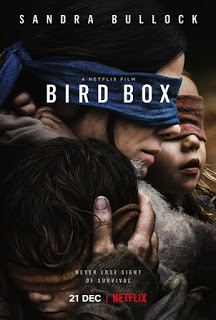Assess the importance of marketing in the media area you have studied
Gavin Orefice Period 5
When it comes to the media area, “film,” marketing is a very essential element to any film's production process. Without marketing, there would be no possible way for the outside world to be informed about a movie being released. Therefore, marketing is more beneficial to the film area of media because it allows movie corporations/companies to promote their media ideas in several ways before officially releasing movies and it allows them to get an idea of how successful their movie will be and how much money it will possibly make them.
To begin, marketing is extremely essential to media corporations/companies because it helps them draw attention to their film through promotion and publicity. Considering that technology has evolved drastically, it has ultimately become easier for movie companies to promote their films. For example, a mobile game for the movie, "Black Panther," which included its main actor, Chadwick Boseman, was created by Marvel Studios in order to help promote the movie. Although this form of digital marketing may not have been as effective as Black Panther's "fashion week"(which exposed some of the costumes that some of the actors would be wearing in the film), promoting a huge franchise through a mobile app shows the several ways movie corporations can market their movies. To go further, "Jurassic World" primarily promoted their film through posters, some deemed "limited edition." This allowed their audiences to grasp a feel of how the movie would be, as well as allow the internet to spread their opinions about their first glimpses of the movie. Even though this form of marketing may have had a different approach, all film corporations and companies all have the same goal: providing their audiences with an intriguing view of their film.
Marketing is also essential to the success of movie corporations/companies because it provides them with a view of how the movie will end up doing online, in movies, etc. when officially distributed. This is important when it comes to the production process because it determines the profit/income that will totally accumulate. For example, before the movie was officially released in theaters, “Guardians of the Galaxy” cross promoted/partnered with the “Monopoly” to create a Marvel themed board game. This allowed Marvel to easily promote the ideas of their movie as well as sell merchandise. In fact, the movie ended up being ranked #1 in theaters, accumulating only a domestic income of 389,813,101 US dollars, 146, 510,104 US dollars on just its opening weekend. This proves how marketing can shape the future success of a simple media idea. Marketing also played a key role in the conclusion of the movie, “Fast & Furious 7.” Because one of their main actors, Paul Walker, died in the middle of their film-making in a car crash, their production process was delayed and the release of the movie was questionable. They therefore had to find ways to create a Paul Walker that their audiences could entirely feel/imagine. A song by Charlie Puth and Wiz Khalifa was created for Paul Walker and in fact helped draw a lot of attention to the movie when it was finally released in theaters and distributed on DVD and blu ray. These are prime examples of how important marketing is when it comes to the success of a movie, or if the movie company or corporation should release it.
To recapitulate, marketing is very beneficial to the success of movie companies because it allows them to promote their film before its release and provides them feedback on how their movie will do when it's distributed. Whether it be done through cross promotion, on social media, through merchandise, or directly through the internet, all movie companies are using marketing in very similar ways. Although they may not be the exact same, they are proven to be ultimately effective as they have made several different movie corporations billions of dollars.












